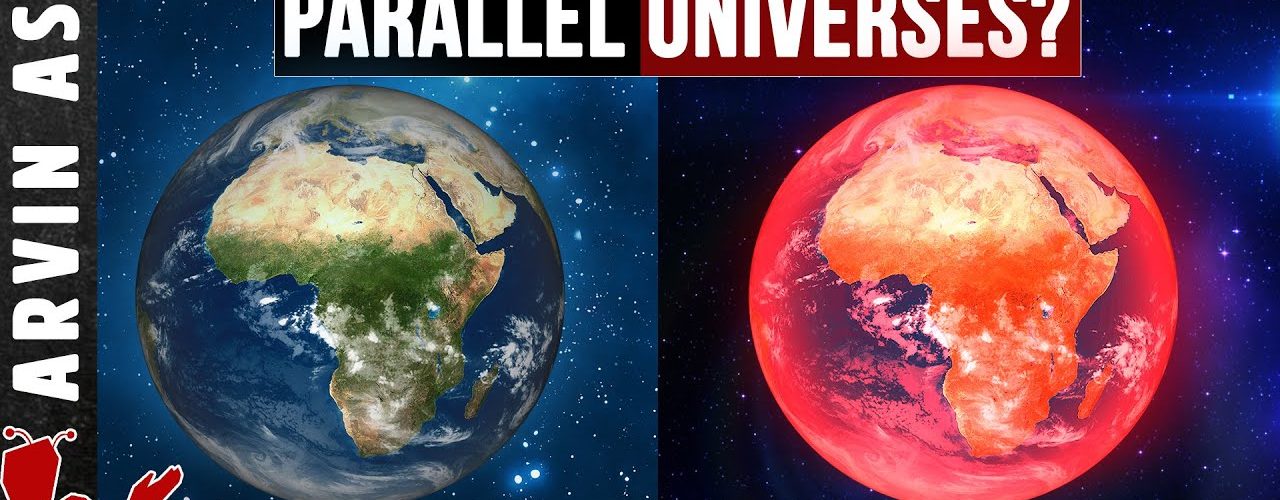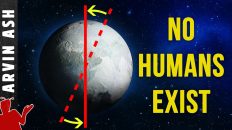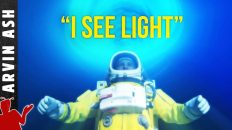Parallel Universes
Imagine a universe where you are as rich as Bill Gates, where you are married to a beautiful woman or man like Kate Upton or Brad Pitt, and you are as admired as Oprah Winfrey.
What if I told you that there may be a parallel universe where all these things are true about you.
Many people dismiss the idea of parallel universes because they think that since by definition we cannot see them, they are like big foot monster. Maybe they exist in theory, but they probably don’t.
But parallel universes are not a theory, they are predictions from theories that are widely embraced by physicists.
What is the evidence for alternative universes, and could different versions of us exist in parallel somewhere out there…that’s coming up right now.
Alternate universes are predicted by a couple theories. For example, string theory has 10 dimensions and by some estimates, up to 10^500 solutions.
If this theory is true, then all those 10^500 solutions would potentially have a universe attached to it. We just happen to be living in one of these universes.
But in this case, all of the alternate universes would have completely different properties than our universe. And in most of them, life would probably not exist. So these would not be parallel universes where different versions of us could exist.
But there are two other theories that predict not alternate universes but parallel universes where the universes are just like ours but only slightly different, where different versions of us could exist.
One is the idea of Infinite universes
Science doesn’t know how big space actually is. The reason it appears to be only 13.7 billion light years in radius is because That limit is set by the distance that light has had the ability to travel since the instant of the Big Bang.
But this does not mean that there isn’t more Universe out there beyond the portion that’s visible to us. The universe is likely larger, and perhaps infinitely larger. If space is infinite, then it must start repeating at some point, because there are a finite number of ways that any set of particles can be arranged.
Physicist Brian Greene calculated this number to be 10^10^122 — this is a very very large number, but it is miniscule compared to infinity.
So if you travel far enough in space, you should see another version of you living in completely different circumstances, perhaps as president of the United States, or as rich as Bill Gates.
But the most intriguing theory that leads to parallel universes is one that is embraced by some of the biggest names in Physics including: Max Tegmark, Brian Greene, Alan Guth, and Sean Carroll
And this idea of parallel universes comes from the Many worlds interpretation of quantum mechanics.
According to the laws of quantum mechanics all particles are in superposition, meaning they exist as waves of probabilities in multiple states, and multiple locations at once. They only gain distinct properties and location when they are measured.
The many worlds interpretation was proposed by Hugh Everett for his phD thesis in 1957 at Princeton University.
This theory says that the wave never collapses, that every time a wave seemingly collapses in our universe, there is a parallel universe where no such collapse happens.
This interpretations implies that reality splits like a fork in the road whenever a wave collapse occurs.
In effect, this implies that the entire universe is one gigantic wave function that contains all possible realities. Everett called it the “universal wave function,” in his thesis.
So the universe is also in superposition of all possible states of its constituent particles. As it evolves, some of these superpositions break down, making certain realities or worlds distinct and isolated from each other.
To be clear, the Many World interpretation doesn’t exactly predict other universe in the way that scientific theories make predictions. This is just deduced from the hypothesis that wave function collapse does not occur in other realities.
The many worlds interpretation avoids the complication of wave function collapse, but it creates the seeming complication of a near infinite number of parallel worlds.
This seems to be a fantastical idea, that there’s a universe out there for every outcome that you can possibly conceive. Just like in quantum mechanics, everything with a non-zero probability of occurring is a reality in some universe.
In other words, there is a universe out there where everything happened just like it did in this one, except you made one or two decisions differently, and your life turned out completely differently – like you became as rich as Bill Gates, or married Kate Upton.
Bryce DeWitt who popularized the many worlds interpretation in the 1970’s says, “Every quantum transition taking place on every star, in every galaxy, in every remote corner of the universe is splitting our local world on earth into myriads of copies.”
Very bold claims like this require some bold evidence, so we have to ask some questions, like ok…How does a split actually happen?
Or what circumstances cause the splitting.
Well, this is the crazy thing about this interpretation, it says that the splitting occurs whenever a wave collapses, meaning whenever a measurement of observation occurs.
When you walk around your own house, there must be millions of splitting events because the molecules on your feet are interacting with the molecules of the floor. The numbers of splits and parallel universes has to be astronomical.
Some physicists consider this almost self-evidently absurd.
But others like Oxford physicist David Deutsch says, many worlds is virtually a fact, it is no more an interpretation than dinosaurs are an interpretation of the fossil record.
It sounds fantastic, but the Many Worlds interpretation predicts outcomes that are completely consistent with physics experiments over the course of decades. So it has to be taken seriously even though it sounds ridiculous.
I have to say that Billions or trillions of worlds is not aesthetically pleasing to me. But I can’t reject a theory just because it does not satisfy my human intuitions. I have no vote on how the universe should work. I have to accept what the evidence points to.
But one of the most serious difficulties with multiple worlds is what it does to the notion of self.
MIT physicist Max Tegmark says, “The act of making a decision causes a person to split into multiple copies.”
But what does it mean to say that splittings generate copies of me? In what sense are those other copies “me?” I have no awareness of the other copies.
Columbia University Professor Brian Greene says we just need to broaden our minds of what “self” actually means. “Each copy believes that it is you. The real you is the sum total” of all the splittings
But Physicist and philosopher David Wallace, says that the notion of “I” can only make sense only if one’s consciousness is confined to a single branch of the quantum multiverse reality.
But there is no physics that would explain that. If your consciousness —or awareness of you — were somehow able to snake along just one path in the quantum multiverse as Wallace says, then we’d have to regard it as some nonphysical entity immune to the laws of physics.
So how could we ever know if the Many-Worlds theory is correct? In the late 1990s a thought experiment was proposed by MIT physicist Max Tegmark — called quantum suicide.
This is similar to the Schrodinger Cat experiment and an analogous experiment would go something like this.
Let’s say you are participating in a wager. You are put in a box with a gun pointed to your head and a button in your hand.
The button controls a quantum splitter that detects the spin of an electron. If after you press the button the spin says up, the gun does not fire, you come out of the box and win a prize of $1 Billion. But if the spin shows down, then the gun fires and you die instantly.
There is a 50% chance that the splitter would detect up, and 50% that it would detect down. The question is, would you take this bet. Few people, I think, would accept 50/50 odds of life and death.
But I might take this bet. And here’s why. If you truly believe in the concept of multiple worlds then you would take this bet every time. Because the only one of “you” that would ever come out of that box would be the one that remains conscious. In other words, in your world, for you to be conscious, you would always have to be in the reality that survived.
In another world, the other yous would be dead, but you would not know this. Your conscious self would always survive and become a billionaire.
The bottom line is this, in the many worlds interpretation, all outcomes with a non-zero probability have a 100% chance of occurring in a parallel universe.
If consciousness is restricted to one world, you will always survive the box wager because you’re the survival of your awareness depends on your not being dead.
But a person cannot be aware of his death – or other selves — that exist in parallel universes.
But obviously we can not test the multiple worlds theory in this way, so How do we test for these parallel universes?
Max Tegmark says we can test this by studying quantum mechanics and building quantum computers. If a quantum computer fails, and we learn that fundamentally the equations of quantum mechanics are wrong, then these parallel universes don’t exist.
But if we can build quantum computers, and quantum mechanics equations are proven true, then we have to take it seriously no matter how aesthetically unpleasing it seems.







